It was in the late 1980s that a United Nations commission, chaired by Norway’s first female prime minister, Gro Harlem Brundtland, set out to officially define “sustainability” as “meeting the needs of the present without compromising the ability of future generations to meet their own needs”.
It is a helpful definition because the term is so often synonymous with environmental actions, usually remedies related to climate change, yet sustainability is also about people and their livelihoods, right down to basic sustenance, something that is well understood at Journey’s End, one of South Africa’s foremost wine producers.
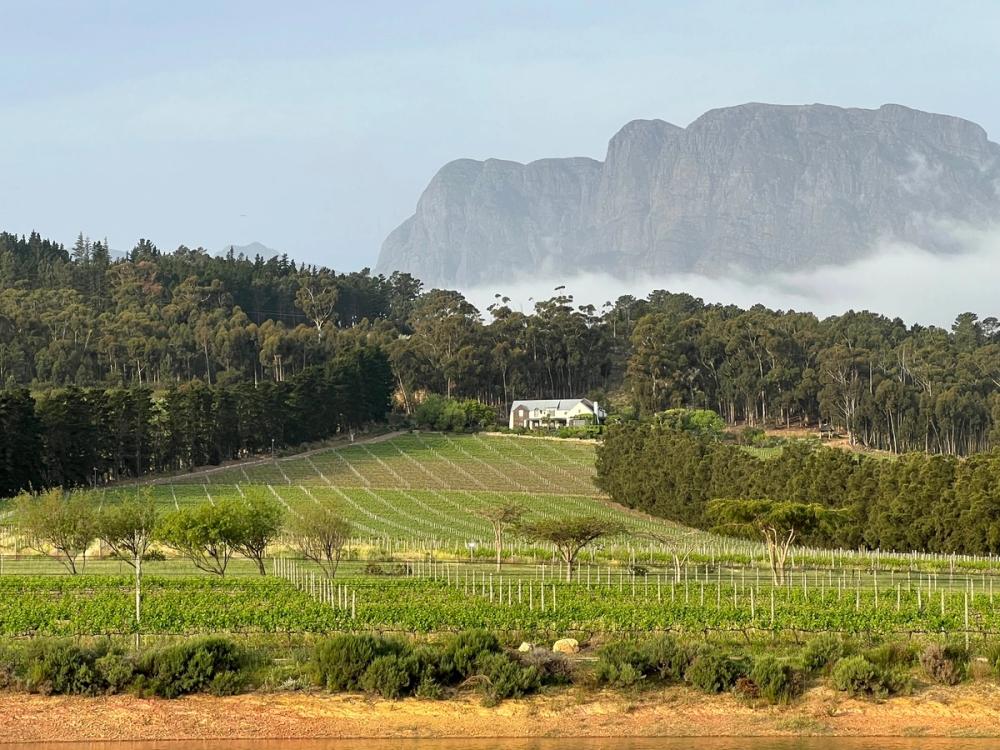
The dramatic location for Journey's End and the home of Rollo Gabb and his family in the shadow of the Helderberg mountain
Choose one of its bottles from a shelf, or a wine list, and you will find yourself - appropriately enough - at the end of a journey, described as a “grape to glass exercise”: an all-embracing, holistic approach to sustainability that starts with the vines and those who tend to them, encompasses biodiversity, and extends to feeding and supporting the neighbouring community in the informal settlement at Sir Lowry’s Pass, close to Somerset West.
The Western Cape is famously blessed with a temperate climate and the most stunning scenery, and the estate - nestled amongst the Schapenberg hills, in the shadow of the Helderberg mountain, with the vines marching down the slopes towards False Bay, where the ocean meets the sky - is no exception.
Helderberg is known locally as “the shining mountain" because it is illuminated by the setting sun.At the south-easterly end of the Stellenbosch region, it is a peaceful place of radiant beauty, yet the vines are surrounded by rolling razor wire and a network of CCTV cameras, reminding us of the social challenges the country still faces.
The journey begins
Journey’s End had seen better days when the Gabb family, from Shropshire, first fell for its charms in the mid 90s, just as South Africa emerged from the apartheid era with its first democratically-elected president, Nelson Mandela.
Roger Gabb - a wine entrepreneur whose credits include the Kumala brand - set about building a house and renovating the estate to make the most of its 350 million-year-old decomposed granite soils and their proximity to the coast.Riding the wave of a newly liberated South African wine industry, the first Journey’s End wine was released in 2004.
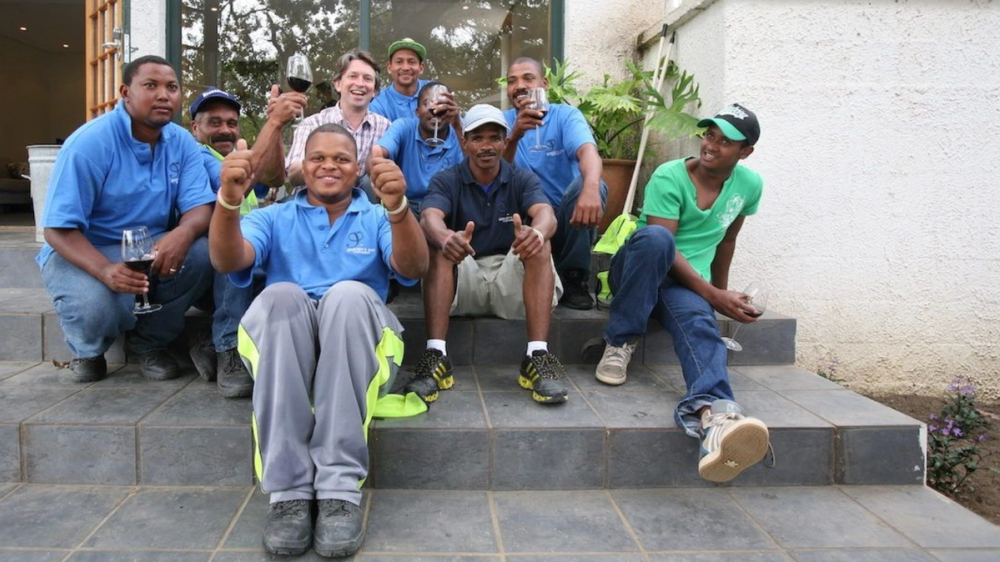
Rollo Gabb with some of his team at Journey's End
Today, Roger’s son, Rollo Gabb - who once ran raves at Manchester’s legendary Hacienda nightclub and is now a director of Harts Group, whose restaurants includeBarrafina and Quo Vadis - is at the helm of the 140 hectare estate, and he has been instrumental in focusing Journey’s End on minimal intervention winemaking, combined with a social conscience.
A Foundation is born
In 2020, Gabb established the Journey’s End Foundations, to bring together its ongoing social projects and to try to avert a humanitarian crisis caused by the Covid-19 pandemic.Just as seeing the vines can make sense of a wine, witnessing the work of the Foundation first-hand, getting stuck in at the soup kitchen, brings to life the commitment the brand has made to its community, from which its vineyard and winery workers are drawn.
As the world ground to a halt in those early months of the new decade and the word ‘lockdown’ entered the global lexicon, the sprawling settlement at Sir Lowry’s Pass, and other areas like it, were staring into the abyss: with no opportunity to work, no benefits system, and next to nothing to eat.
The Foundation had an early goal to provide food for 10,000 meals a week; by September 2021, it had reached the milestone of providing a million meals; and it has now provided around six million, as demand has continued post pandemic.
Catering equipment and ingredients are funded by the Foundation, while meals are produced and distributed free to those in need via a network of six soup kitchens run by inspirational local women, serving up some 30,000 meals per week.
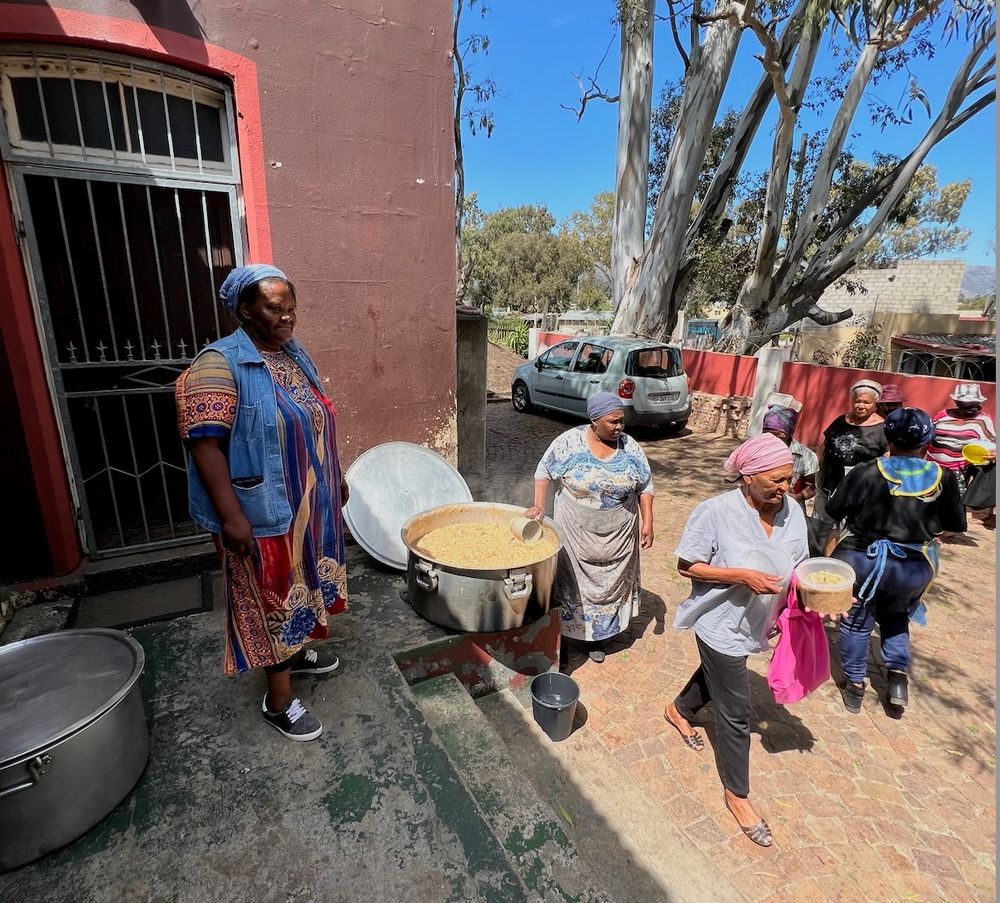
Rollo Gabb and Journey's End support for the local community includes funding a local food programme that serves 30,000 meals a week to local communities
At the kitchen she established, we meet Joyce, a doughty campaigner who decided that actions speak louder than words.She began her work back in 1992, from a small hut, as a different global pandemic, HIV/AIDS, took a terrible toll on those close to her.She leads a small team, preparing a couple of dishes per day, five days a week, all year round, including a Christmas lunch.
Members of the community form a long, orderly queue for a healthy, filling meal - on the day I briefly helped dish up, it was a chicken and vegetable stew - with Joyce keeping an eye on the portion sizes to ensure those with more mouths to feed were given enough.Joyce receives no state funding and has been known to chase away government officials.
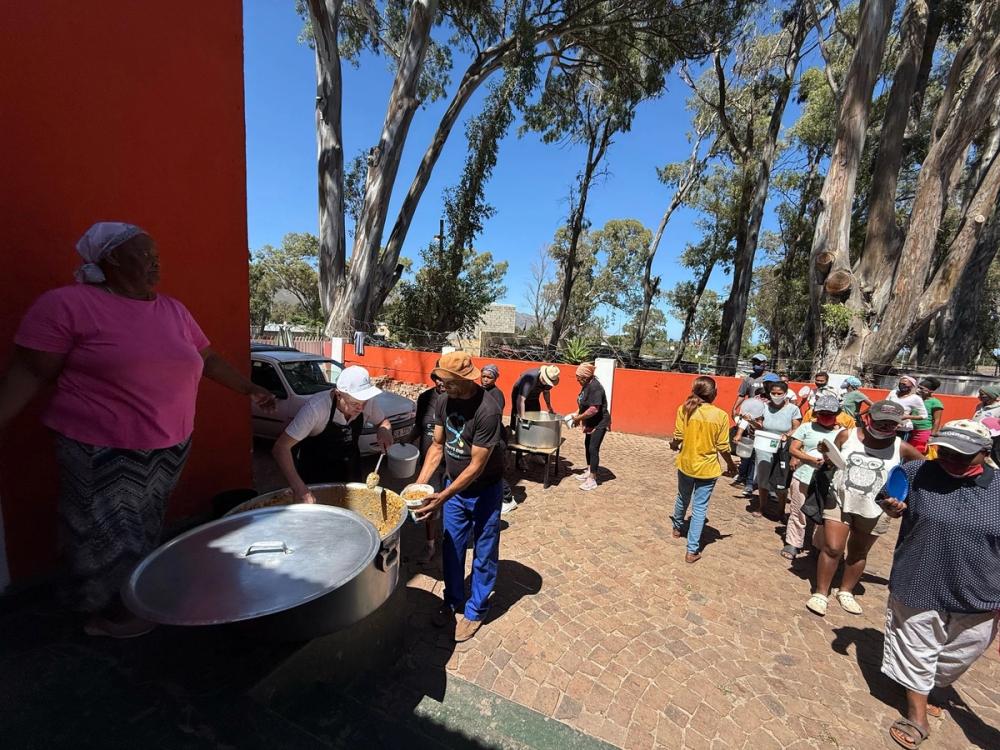
Journey’s End winemaker, Mike Dawson, feels particular pride at the work of the Foundation: “I’m so passionate about this because, at the start of Covid, people in our area were really struggling, (they) were starving, nobody could go to work for about eight months, people who were working casually (elsewhere) were dismissed, and there was a massive shortage of food … it was very important that we looked after the community, so it’s a really special place for me to work, because I see the difference those people make in our vineyards and in our winery.”
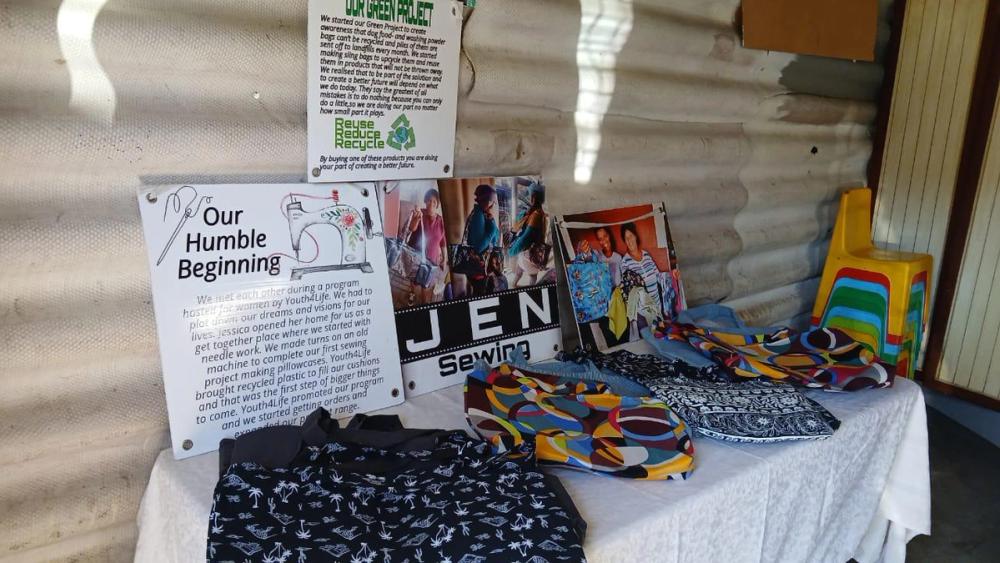
Journey's End runs a number of local community schemes to support the communities close to the winery
The Foundation also supports a creche, co-funded the construction of a school hall and provides cash for an anti-bullying initiative for local youngsters.It also backs a pioneering project to help victims of gender-based violence, through a refuge and mentor programme.
We meet the women who attend ‘JEN Sewing’, turning un-recyclable, heavy-duty plastic into eye-catching bags, some of which are now exported, providing them with a sustainable source of income, while also reducing environmental waste.Until the Foundation provided industrial sewing machines, the women were stitching the bags by hand.
"At Journey’s End, we believe that making great wine goes hand in hand with making a meaningful difference,” says Stephanie von Oppell, Journey’s End’s global head of marketing.“Sustainability for us is holistic, balancing both socio-economic and environmental contributions in a harmonious relationship. By investing in our community, we’re not just shaping today and tomorrow—we’re building a legacy that lasts for generations.”
Journey's End won ‘Ethical Company of the Year’ in The Drinks Business Green Awards, in 2020, and has also earned World Wildlife Fund ‘Conservation Champion’ status for removing ‘alien’ plants and developing native flora and fauna, such as fynbos (a distinctive vegetation unique to the Western Cape) and spekboom (a succulent that sequesters carbon like a sponge), as well as its work on water preservation, including a borehole, catchment dams and the recycling of winery waste. It can also claim to be South Africa's First B Corp Certified Winery & Vineyard.
Around 60 hectares of the estate is vine-free, dedicated to indigenous plants, while there are 40 beehives to encourage pollination, promote biodiversity and provide honey.
An evolving portfolio
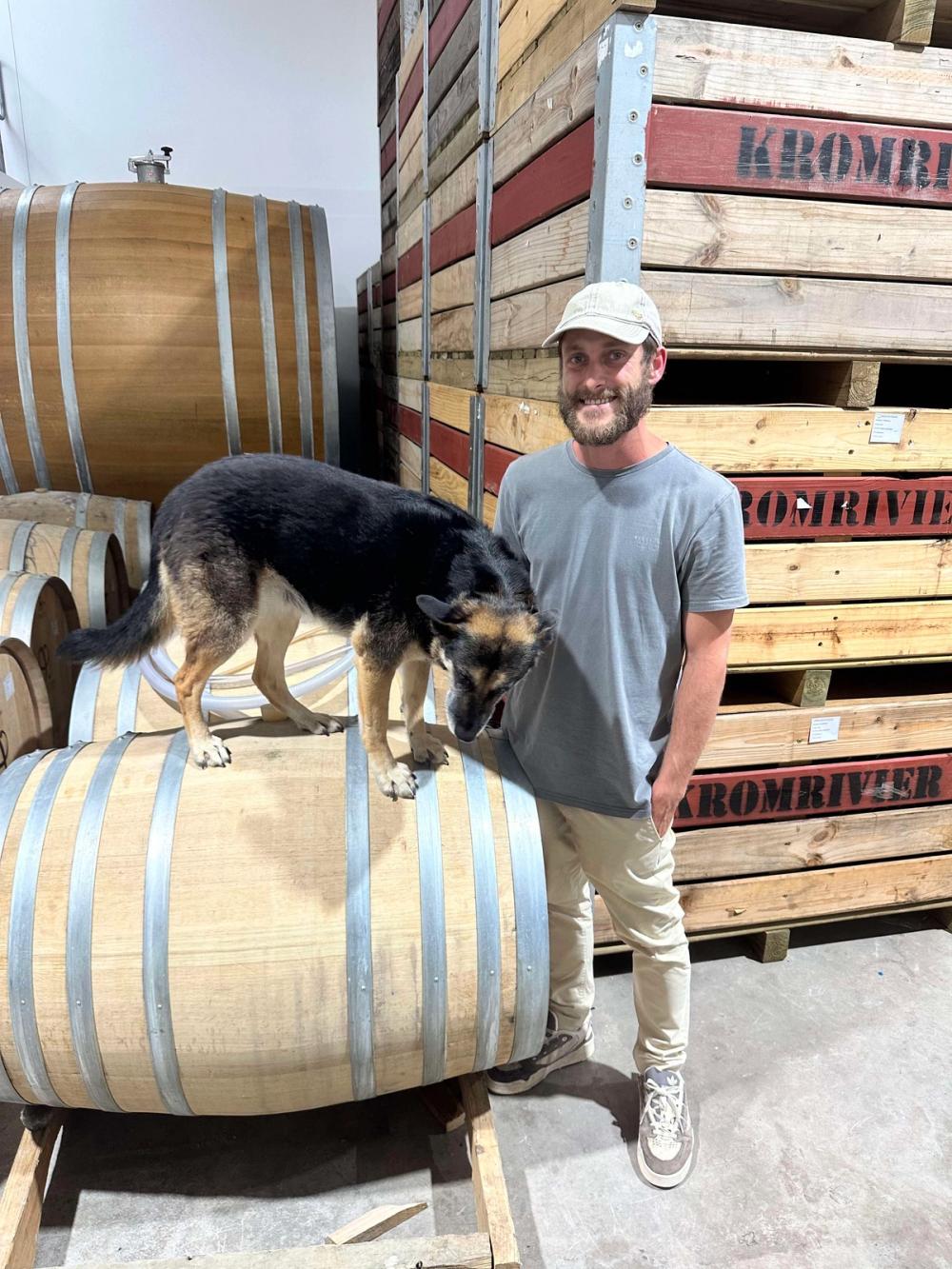
Journey's End winemaker Mike Dawson and one of the rising stars of South African wine
Under Dawson’s direction, the wine portfolio, European in style, has gently evolved, dialling back the influence of oak while putting a greater emphasis on freshness, making a virtue of the vineyard conditions - most especially the influence of ‘the Cape Doctor’, a cleansing south-easterly wind that whistles across False Bay from the point where the Atlantic meets the Indian Ocean - preserving the vibrancy of the fruit and also mitigating disease pressure.
“Our temperatures between day and night fluctuate quite significantly, which is great because it elongates your ripening period in the vineyard, where we are able to pull out really nice concentration in the fruit flavours before our grapes become phenolically ripe, and that wind helps us maintain high natural acidity (and) we are so close to the ocean that we get a saline minerality. It’s a really easy place to make wine, the grapes do all the work for me, so I see myself more as a caretaker than a manipulator,” he says.
“Cabernet Sauvignon is our main focus on the red side, but we grow Merlot, Cabernet Franc, Petit Verdot, Malbec, with some Grenache, Shiraz and Mourvèdre as well, while for whites, our focus has traditionally been Chardonnay, but we also grow Sauvignon Blanc, Sémillon and some Viognier.”
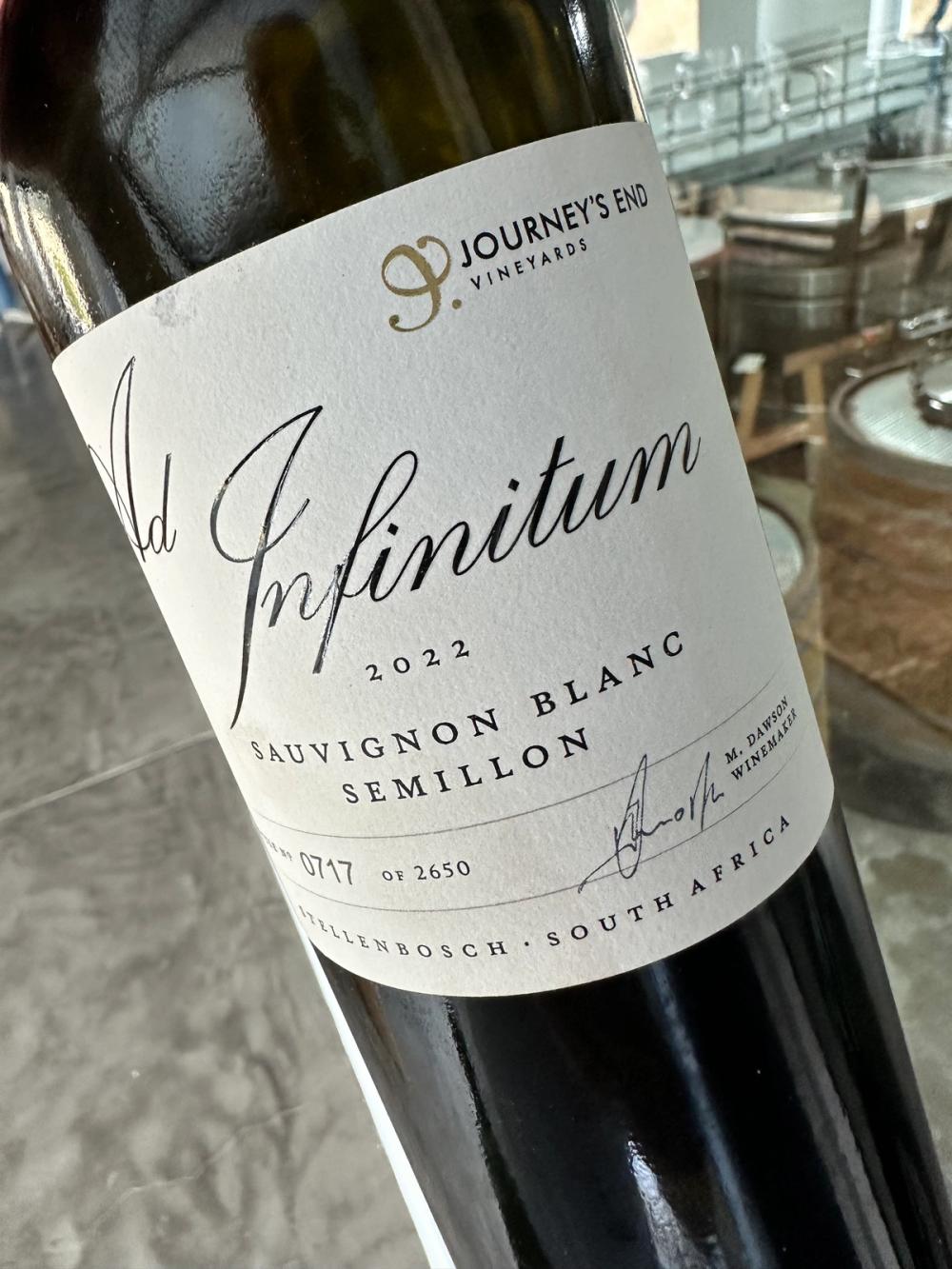
Ad Infinitum is Journey's End tribute to Bordeaux
At what Dawson describes as “the pinnacle of the Journey’s End portfolio”, the flagship white is ‘Destination’ 2023, a Chardonnay inspired by the wines of Mersault, boasting vibrant citrus and stone fruits, rich concentration and well integrated French oak (around 30% of it new).
‘Ad Infinitum’ 2022 is the culmination of a passion project for the winemaker, a tribute to white Bordeaux, a blend of 87% Sauvignon Blanc, the reminder Sémillon, fermented in a 2000 litre Ovunum French oak vessel (the shape between an egg and oval), which offers fantastic freshness, lemon zest, tropical fruits and a seductive saline streak.
For the reds, ’The Griffin’ Syrah 2020 has a cult following, produced in idiosyncratic style with 85% carbonic maceration and ageing in American oak, yielding a distinctive, savoury charcuterie character, supported by bright, sour cherry.While at the top of the range ‘The Cape Doctor’ 2018, offers dark, brooding hedgerow fruits, balanced by a crunchy damson acidity, cinnamon and cherry chocolate, with fine tannins, a wine built to age that’s very far from its journey’s end.
But whilst the quality of the wines have earned them listings in major retailers and restaurants all over the world it is the work that Journey’s End does beyond the vines and in the local community that really speaks volumes.
* You can find out more about Journey's End at its website here.








































